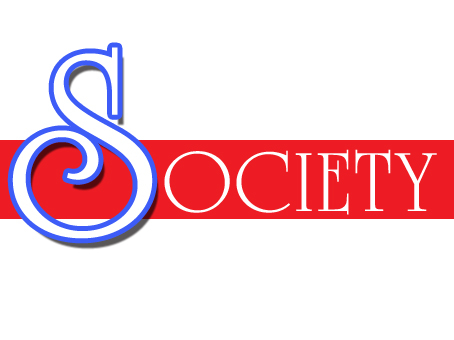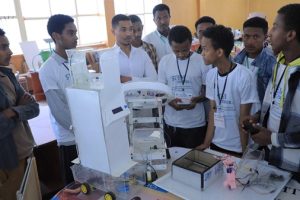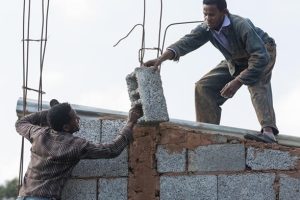
“Hambaile aman bedish huluna” said Rukia Mohamed in Harari language literally means ‘welcome’ to the media crew arrived at Harari Cultural Museum, recently.
It was in the afternoon of July 2, 2019 the crew of journalists from different electronic and print media was heading to one of the oldest cities of Ethiopia, ‘Harar’ in two midi buses. A person who is visiting the city for the first time or after some years, observes a new feature of the city that grabs his/her attention. This new feature is writing in big and uppercase alphabets to describe the city. It reads as ‘CITY OF PEACE’.
This attention grabbing expression is planted in the compound of Harari Cultural Center which is recently built for the celebration of Nations and Nationalities day. As many who know the dwellers of Harar believe, this expression fully describes the city.
It is a solid fact that people of Harar are peaceful and hospitable. They can live harmoniously not only with their fellow people, but also with wild animals such as hyenas. The hyena feeding culture is among the notable assets of Harari people.
By passing the new feature of the city, the crew of the journalists went to the central part of the city. Their destination for the day as a part of the plan was Harari Cultural Museum which is located in the oldest wall fenced part of the city with five gates ‘Jugol’.
Rukia Mohamed, Harari Cultural
Museum tour guide arrived at the site after a few minutes of the arrival of the crew. As the time was in the afternoon, it was a period of rest for Rukia but she sacrificed her leisure time to describe about the museum. And this by itself is one of the manifestations for the Hararis’ hospitality.
After welcoming the crew in Amharic, English and Harari languages, she started explaining about the Museum. As to her, the Cultural Museum is over five hundred years old and it was built all in all by local materials like wood, stone and mud by the then Amir or king.
There is no any factory product used for the construction of the Museum. It is well furnished with colored mats and is forbidden to enter wearing shoes.
“The Museum,” said Rukia “represents each and every house of the Harari households. It has five traditional seating areas or stages labeled according to the ages and gender of the residents.
The first stage is called Amir Nedeba which means the seat of the Amir or the king. Previously, the Hararis used to govern by their own rulers according to the Islamic Law of Sherea until the reign of Emperor Minilik
II.” Currently that position is given to the head of the household the father who is considered as a king since there is no Amir now, she said.
Extending her details, Rukia said that the biggest stage which is called Gidir Nedeba is seat of high officials of the society like sheik, ulama and mufti who assumed to bring justice and peace for the people as well as the nation.
The next small stage is called Guti Nedeba which is used as a seat for the youth who serve the officials. This seat has additional meaning for the youngsters who sit there, as of Rukia that is they want a fiancé. The rest two stages Getiher at the back of the gate and Tit Nedeba are seats of mothers and little children respectively.
The five seating stages have religious meaning in relation to the Muslims’ five daily prayers ‘Solat’. The five gates of Jugol are religious commandments known as ‘Arkanun Islam’ or Islamic principles like the Ten Commandments in the bible, she said.
Rukia turned the journalists’ attention from the sitting stages to the cultural house-wares those decorated the inner walls from corner to corner. All house-wares are made of local materials and they are in use for household purpose in addition to decorating the house, said Rukia.
Each Harari household is equipped with every material needed for day to day and occasional purposes. If a woman is borrowing a house-ware from neighbors, she is assumed as good for nothing. Therefore, having complete house-wares is an indicator of well-organized housewife.
Besides, the houses of all Harari are similar from furnishing to the kinds of house-wares and their sitting arrangements except the quality of materials which differentiate the rich from the poor, she added.
In addition to the house-wares, there are different kinds of Islamic Holy Books called ‘Kitabs’ in the house. All are written by hand of sheiks and ulamas using local materials. The writing inks are called ‘Med and Dibate’ which are prepared from ashes taken from the lower part of pottery frying pan, eggs, leaves and flowers of different colors.
Materials used as writing paper are also made by hand from chopped wood and fragile so that visitors are not permitted to touch. They have their own writing sticks, tables, seating mats for the writers and capes or ‘Coloita’ stands as well as binding and drying materials, she further explained.
Harari culture is firm in many ways. Among these is money saving pot in which the father put money for his wife and children for the purpose of use in case after the death of the man. He cannot use from that money by any means while he is alive as it is her own property, said Rukia.
Regarding the benefit of the museum for the people, Rukia said that basically it is not financial though it generates income from visitors’ entrance fee. Various kinds of visitors such as students, delegates, ambassadors, Ministers and honorable guests usually come to the museum.
Most of them visit without entrance fee. Its major advantage is preserving the fertile culture of the Harari, introducing to the rest of the world and handover it to the generation to come.
The Ethiopian Herald July 9/2019
BY BACHA ZEWDIE





